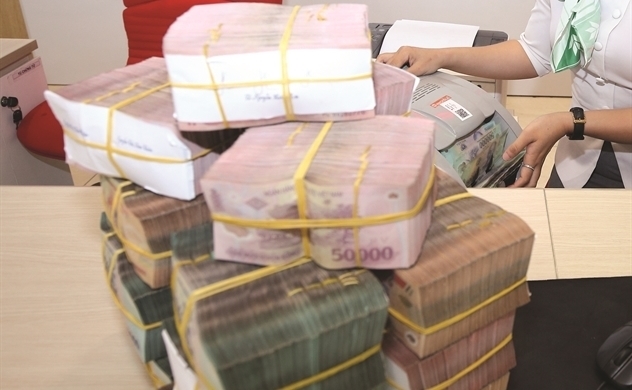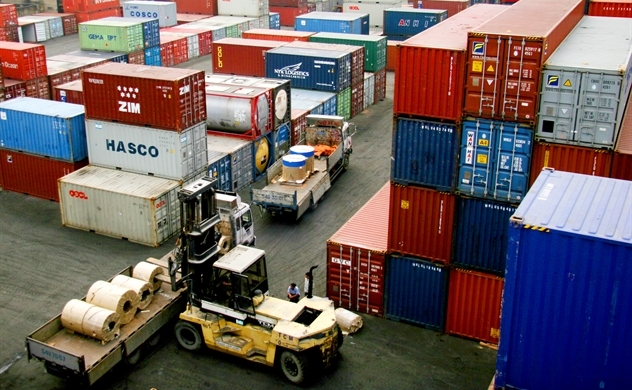Banks report lower profits on rising bad debts

In the short term, it is difficult for the banking industry to expect a breakthrough in profits. Photo: Quy Hoa.
According to the Q2 business results report for listed banks, bad debts increased in addition to deteriorating business results.
Business performance deteriorates
Data from VNDirect Securities shows that in the second quarter of 2023, the total pre-tax profit of the 25 largest listed banks reached VND 61,600 billion, down 3.1% over the same period last year. In terms of growth, this is much lower than the increase of more than 36% year-on-year in the second quarter of 2022.
Bank profit growth in the second quarter varies by group, with state-owned commercial banks showing an average of 15% growth while joint-stock commercial banks experienced double-digit declines.
Data from SSI Research reveals that there is also a notable disparity in the group of joint-stock commercial banks, with some banks posting double-digit growth while numerous banks reported a fall of more than 10%, 20%, or even 30% of pre-tax profit in the second quarter.
Increased net interest income and favorable lending rates were the main drivers of Sacombank's pre-tax profit growth in Q2 2023, which was nearly 80%. The bank continues to promote bad debt collection and handling, collecting nearly VND 2,700 billion in outstanding principal and interest.
OCB's pre-tax profit increased by 75% in Q2 2023, with its foreign exchange business generating over VND 62 billion in revenue. This was seven times higher than last year, and OCB no longer recorded more than VND 203.8 billion in net profit from trading investment securities.
In the other direction, VPBank, Techcombank, and TPBank had the greatest drop in profit over the same time in the second quarter. The major reason for this is that VPBank does not have an income of more than VND 5,642 billion from other support operations and other revenue at this time, as it had in the previous period.
In the case of Techcombank, a substantial loss in gross profit margin in the second quarter, as well as a fall in business categories such as bancassurance and investment banking, resulted in a more than 20% drop in pre-tax profit compared to the previous quarter. Meanwhile, TPBank's profit is due to rising capital and operational expenditures.
Banks' poor second-quarter performance was mostly attributable to sluggish loan growth and a fall in net interest margins.
NIM narrows
Net interest margins of the 25 biggest listed banks declined 32 basis points year on year to 3.41% in the second quarter of 2023, according to VNDirect statistics, the second straight quarter of decline.
Only Sacombank has the largest rise in NIM when the accrual interest pressure is removed from this unit among the medium and big banks. Furthermore, VIB and VietinBank are two of the few banks that can sustain positive NIM growth over the same time period by making efficient use of interbank capital.
Meanwhile, VNDirect data shows that the NIMs of VPBank, Techcombank, LienVietPostBank, and TPBank continued to decline the most as the corporate bond and real estate markets still faced liquidity difficulties.
The positive point is that demand deposits (CASA) of the whole industry have improved from 17.6% at the end of the first quarter of 2023 to 18.2% at the end of the second quarter of 2023 when deposit interest rates decreased continuously four times cut operating interest rates.
“We expect the cost of capital to fall more sharply when the 3rd and 4th rate cuts taking place at the end of the second quarter of 2023 take full effect from the second half of 2023 onwards. However, we do not expect NIM to improve immediately as interest rate cuts remain the top priority to boost economic activity," VNDirect said.
SSI Research finds NIM well-maintained in state-owned commercial banks due to evenly distributed profitable assets. Joint-stock commercial banks' NIM declined due to high deposit growth, lowering interest rates, and increasing credit institution bond portfolios.
In fact, unusual events in the corporate bond market and the incident at SCB had a great influence on investor sentiment. Accordingly, it will create barriers for small commercial banks, especially those that are weak or do not have good brand awareness.
Small banks offered high deposit interest rates to offset investor concerns, impacting their NIM, while large banks, especially state-owned ones, had lower mobilization costs.
Asset quality declines
Banks face downward pressure on asset quality, with VPBank, OCB, and VIB leading in bad debt ratios. State-owned commercial banks and joint-stock commercial banks experienced a significant slowdown in bad debt formation compared to Q4 2022 and Q1 2023.
Banks' business picture improved in Q2 2023, with service activity income recovering and demand deposits bottoming in most banks.
According to Mr. Nguyen Hung, CEO of TPBank, circumstances will grow tougher in 2023, and the banking sector will be harmed by unfavorable market trends. It is clear that the real estate industry, as well as the consumer market, is experiencing stagnating demand, putting the bank in a tough situation.
According to Mr. Nguyen Duc Khang, Head of Analysis Department at Pinetree Securities, while bank earnings did not fall much in the second quarter, bank asset quality is improving. With group 3 debt growing and NPL coverage falling, the reduction is rather considerable.
Same category news
-
Hoàng Kim
Latest news
-
Huyen Hoang

 TIẾNG VIỆT
TIẾNG VIỆT _291615658.jpg)
















